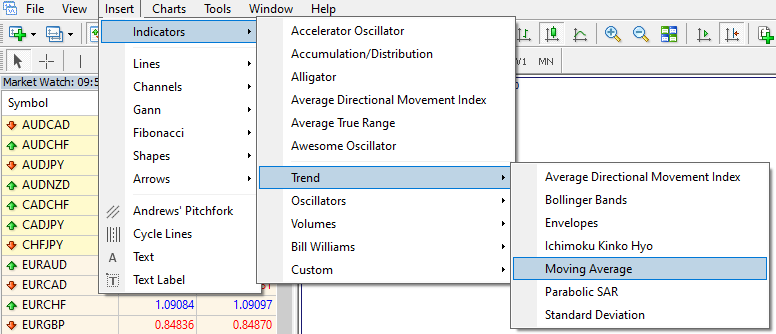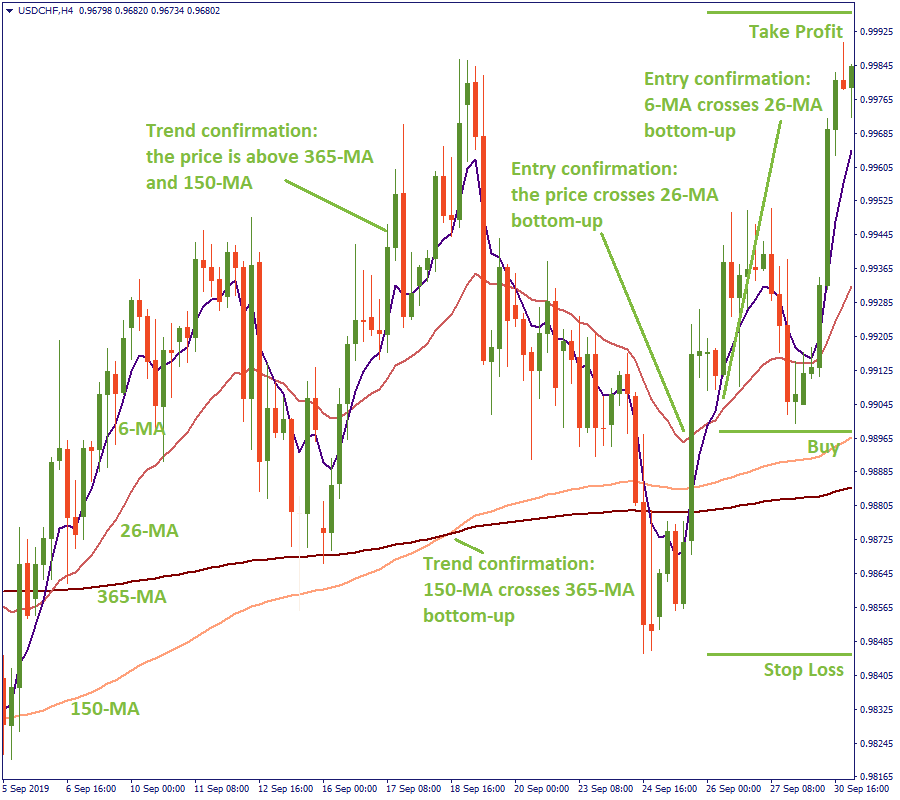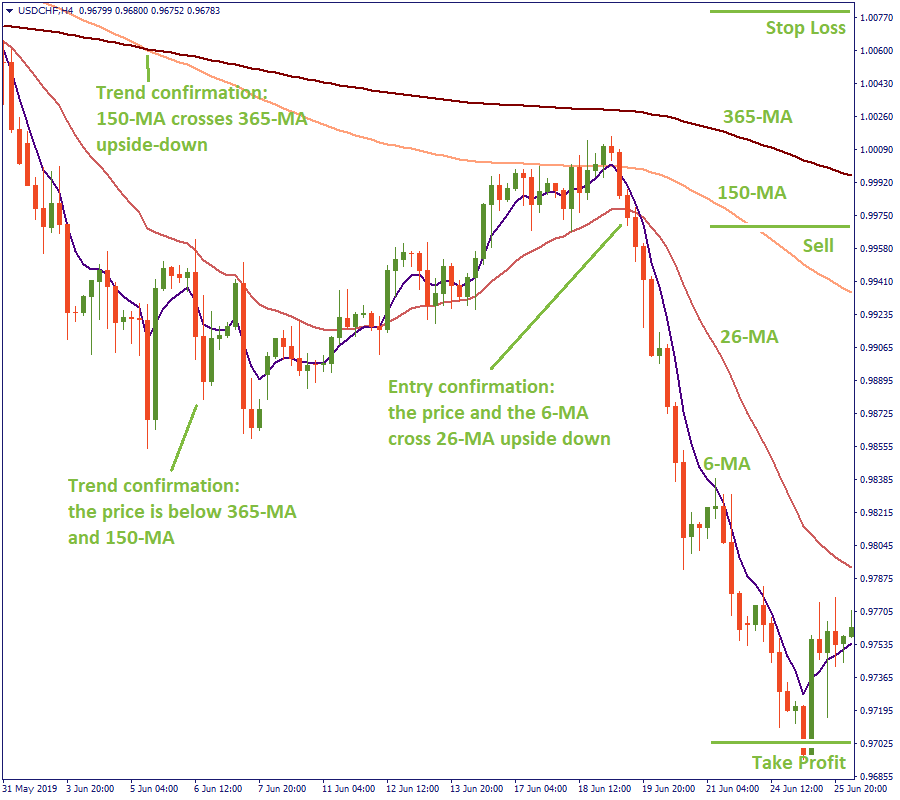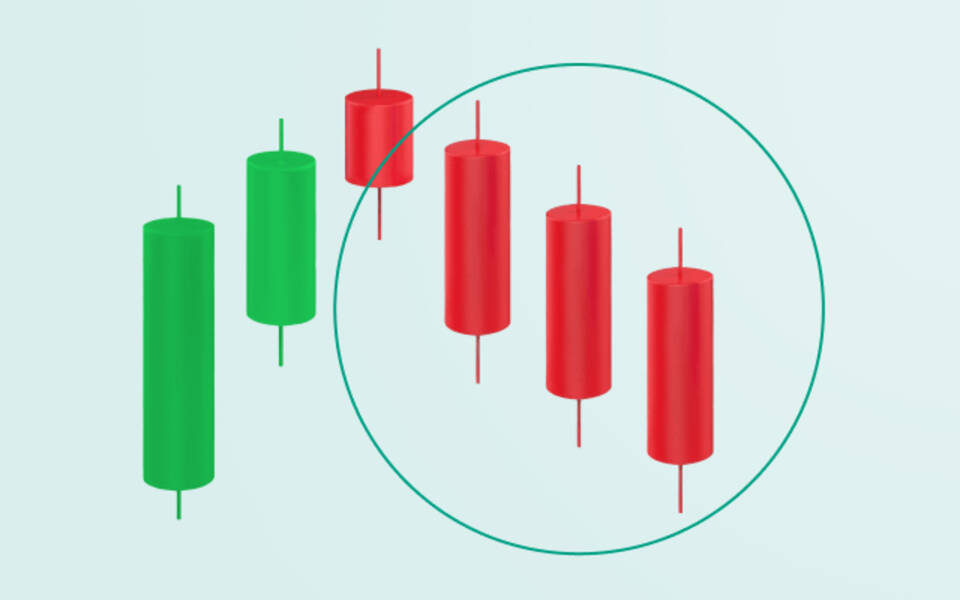Base-150 trading strategy
Essence
This is a trend-trading strategy. It allows determining trend and choosing entry points. Long-term Moving Averages are used to confirm the general market direction, and the short-term ones are used to indicate where to open a position.
Tools
For trend identification
Long-term Moving Averages: 365-period and 150-period, both exponential.
For entry point identification
Short-term Moving Averages: 26-period and 6-period, both exponential.
Setting the Moving Averages
Below you will see where to choose the Moving Average indicators in the MetaTrader menu.

Right-clicking on the Moving Average line and choosing the Properties menu will offer you to set the required exponential method as below.

Timeframes
Daily, H4 and H1 are most convenient for this strategy.
Trade items
You may trade any currency, stock or commodity using this strategy. However, to make regular profits, it would be more efficient with those currency pairs or items, which show more regular price movement patterns. Therefore, we suggest such EUR/USD, GBP/USD, GBP/CHF, and USD/JPY for this strategy.
Steps
Identifying the trend
Essentially, we are not deviating from the trend-trading rule: buy on the rising market, sell on the decline. Therefore, firstly, you need to understand if the market is rising or falling. To do that more easily, plot 365-period and 150-period Moving Averages to the chart.
Now, if you see that prices are above the 365- and 150-MAs (or the 150-MA crosses the 365-MA bottom-up), that is a rising trend. Hence, you will buy. Otherwise, if prices are moving below both the long-term MAs (or the 150-MA crossed the 365-MA upside-down), that will be a downtrend. Thus, you will sell.
Identifying an entry point
Now, find an entry point. To do that, you plot 26-period and 6-period MAs to the chart.
Uptrend/buying
In an uptrend, wait for the price (or the 6-MA) to cross the 26-MA bottom-up – that will be a signal to open long positions.

Downtrend/selling
In a downtrend, when you see the price (or the 6-MA) crossing the 26-MA upside-down – you sell.

Stop-loss
It is recommended to set the stop-loss above the 365-MA for the sell trade, and below the 365-MA for the buy trade.
Conclusion
There is information in the media that this strategy enabled a group of traders to gain significant profits on 80 deals in a row. While that may be the case (we cannot deny the possibility of an effective trading strategy in use), we do not advise you to get obsessed with any single strategy to see if you actually hit 80 or 100 or any other number of successful deals based on this approach.
Sober risk-management and expectations from daily trading are always the best practice. See if this strategy works for you, take some time to reality-check it. If it is successful – well done; proceed with caution. If not – continue learning and try using other strategies.
